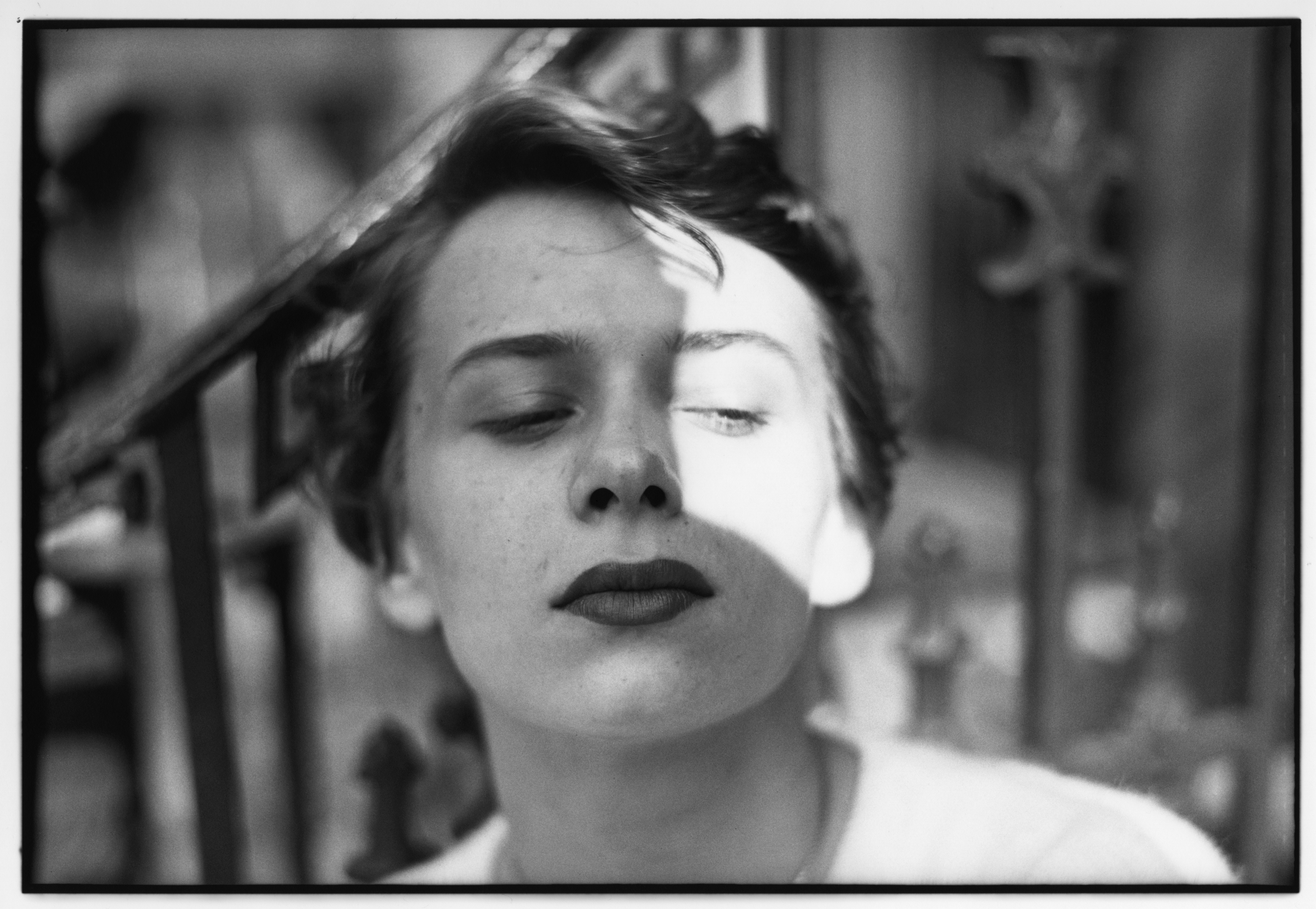Ana, 1950s © Saul Leiter Foundation
A new show combines black-and-white and colour images with abstract paintings to convey a uniquely understated, sometimes hidden approach
“Photographs are often treated as important moments,” Saul Leiter once said, “but really they are fragments and souvenirs of an unfinished world.” In this reading, photographs are unmonumental, able to capture something of a place, event or era, but not to fully evoke a feeling or atmosphere after it has passed. They are merely remnants, Leiter suggests, and this quote provides the title of his major retrospective at MK Gallery – shards of evidence to inform and furnish our understanding of the world, but never able to drive the story forward themselves.
Leiter’s own work puts his famous understatedness to the test. He was an “anti-hero, unsung and humble” says Anthony Spira, director of MK Gallery, but his prolific photographing of New York City over 60 years makes him a unique chronicler – not just in terms of volume, but also medium (being one of the first to experiment fully with colour fine-art photography), and concentration on a single location (around his home in the East Village). “His gaze permeated the tumult of the city,” says the show’s curator Anne Morin, “challenging what draws the eye and scrutinising what is not seen.”
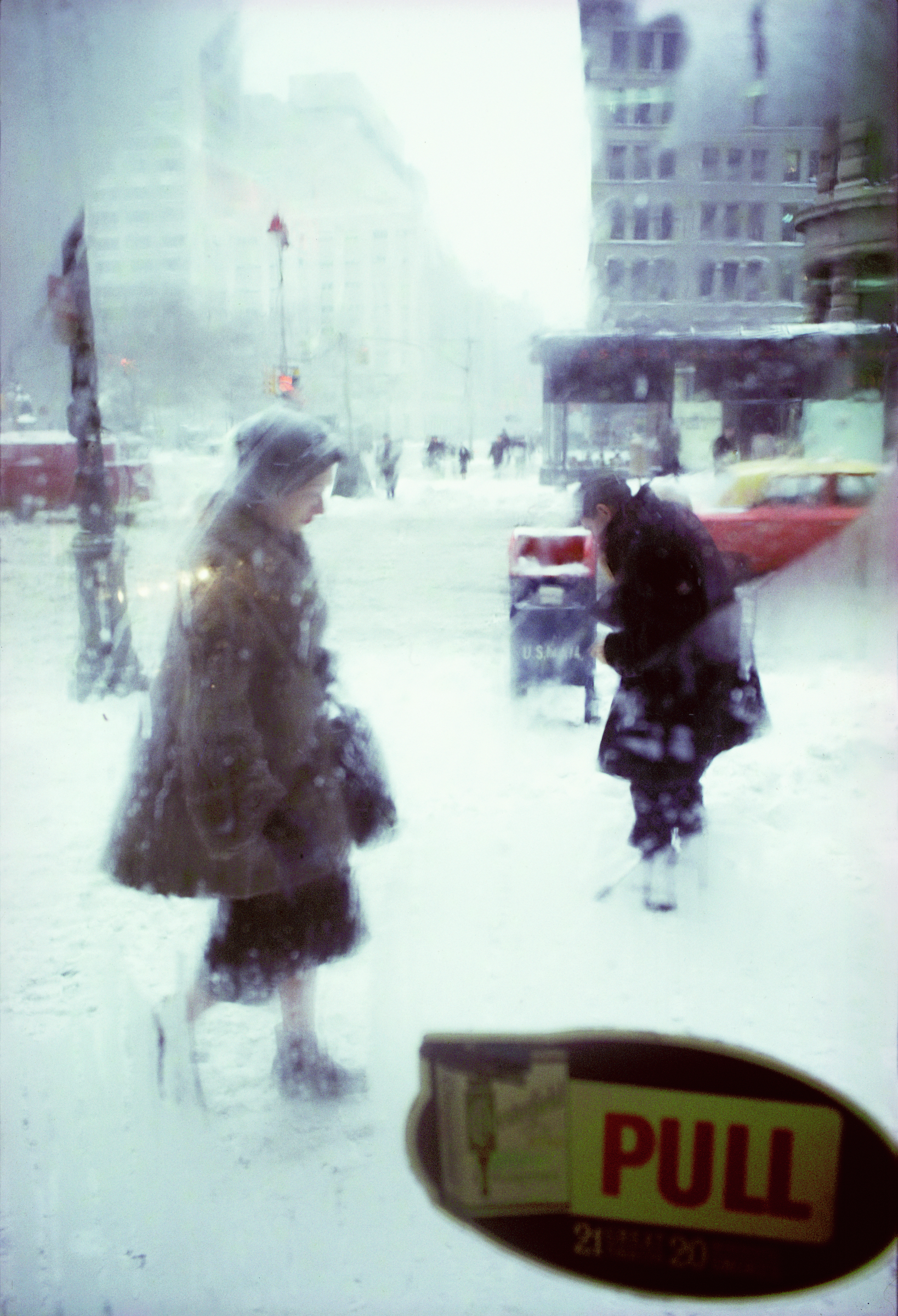
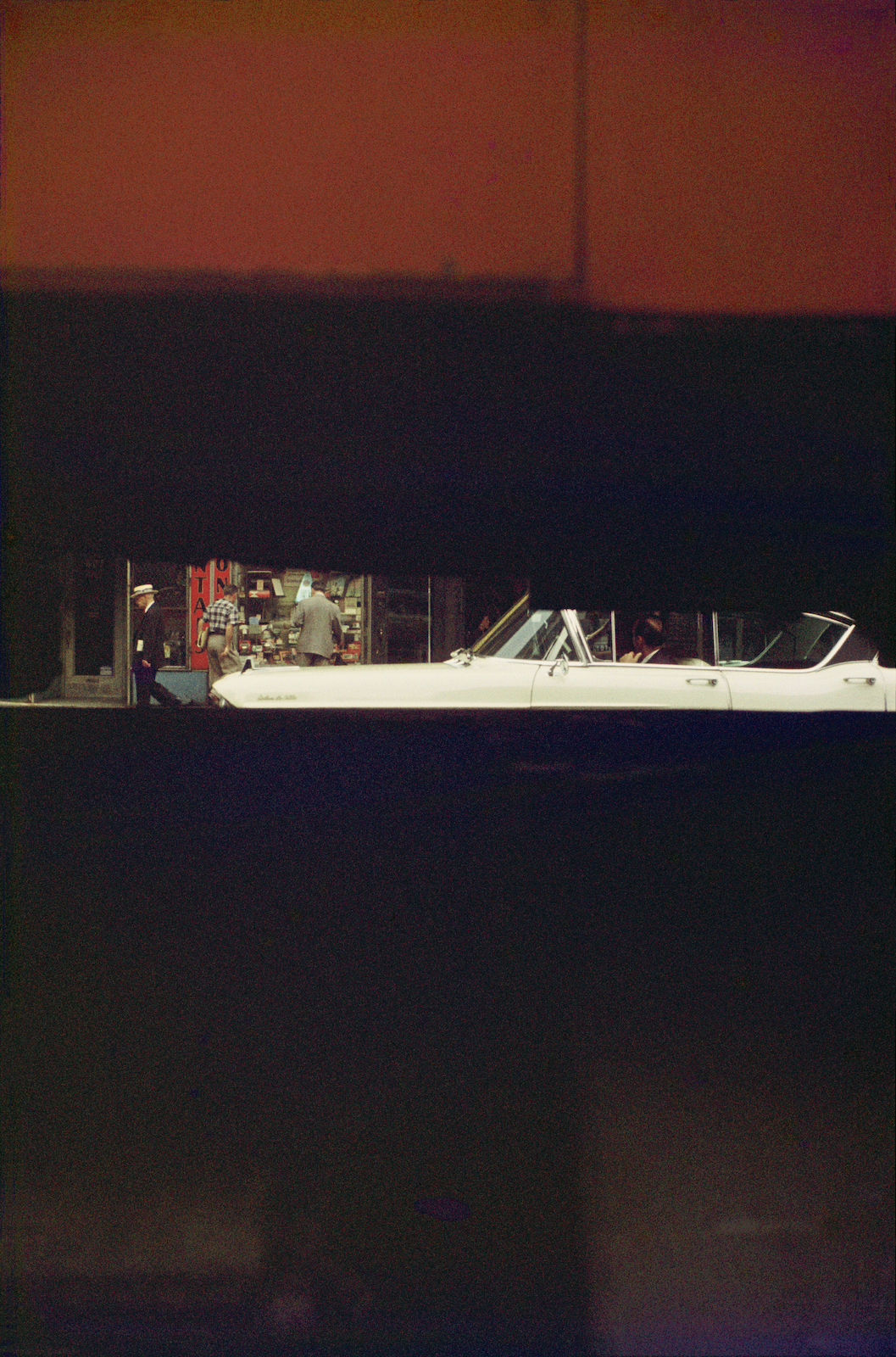
“I tend to react to what I find,” Leiter said… photography is about “catching certain moments, and I don’t know if I’m going to get it”
An Unfinished World features 171 photographs alongside a selection of over 40 of Leiter’s lesser-known paintings, hung together in clusters which give equal priority to his early black-and-white work and his later, more famous colour shots. His paintings are influenced by the Abstract Expressionism which was developing around him in New York, though his canvases are shrunk and delicate compared with the scale and energy of his friends Willem de Kooning’s or Richard Pousette-Dart’s. The photographs are a mixture of intimate portraits, street work and fashion, the latter nodding to Leiter’s commercial practice, which sustained him in New York until he closed his studio in 1981 to work solely as an artist.
Leiter roamed the East Village camera in hand, capturing quotidian scenes but without elevating his figures to character status. Commuters, taxis, markets, waiters, lovers and flâneurs are all captured with his discreet eye, which also scrutinises the city’s sunrises, dusks, rain and snowfall. The prevalence of advertising billboards and restaurant signage speaks to New York’s density, allowing Leiter’s colour images to radiate warmth even when people are absent. In this setting, you can make pictures without a thesis; the city is so photographed that it tends to produce moments of visual intensity without overwrought choreography. “I tend to react to what I find,” Leiter said; he elaborates in a studio video interview at the end of the exhibition that for him, photography is about “catching certain moments, and I don’t know if I’m going to get it”.
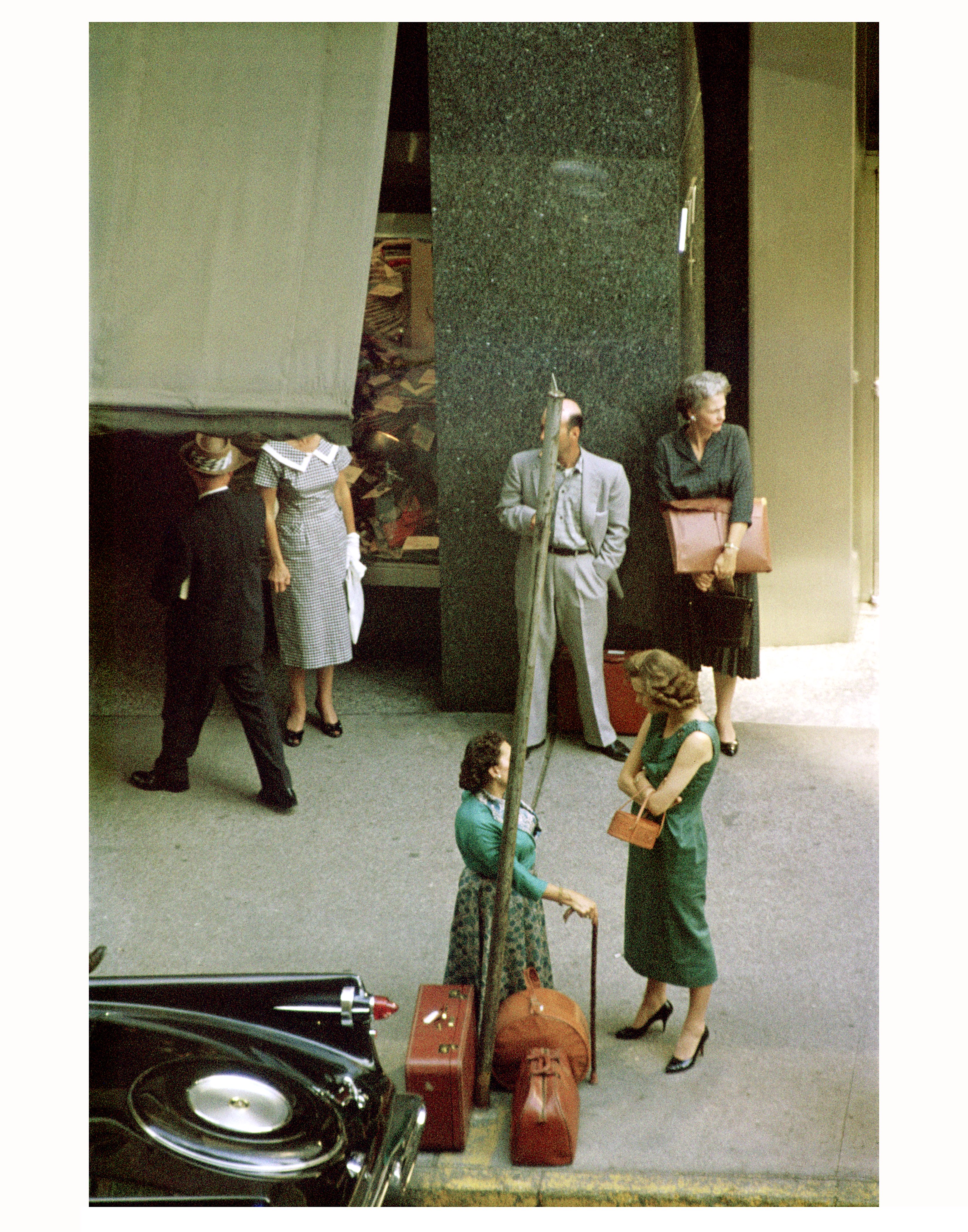
An Unfinished World showcases Leiter’s eye for shadows, silhouettes and reflections, adding an anonymous quality to a tradition of street photography into which he doesn’t quite fit. Walkers’ umbrellas, long coats and hats abet this preference for concealment, and many of Leiter’s subjects have their heads bent as they rush down the Manhattan streets, sheltering from the wind and rain as he lurks in the middle distance. In black-and-white, these shades and angles create an almost mystical effect – hundreds of fragments which accumulate towards an incomplete vision. In a set of four square prints presented together, you can see the top hats and gentle gesticulations of the subjects. Here Leiter’s invisibility is truly felt; he shoots from a low vantage point, forever beneath, behind or beyond the action, bringing us close but avoiding intrusion.
There are moments of intimacy when Leiter shoots his friends or lovers inside. His longtime partner Soames Bantry appears in disarming bedroom snaps, while nudes of lover Inez and his first wife Barbara combine a model-centric eye with a personalised observation which seems opposed to his street work. In black-and-white, Leiter was a “surgeon of reality”, Morin explains; in colour, he “painted with a mechanical eye”.
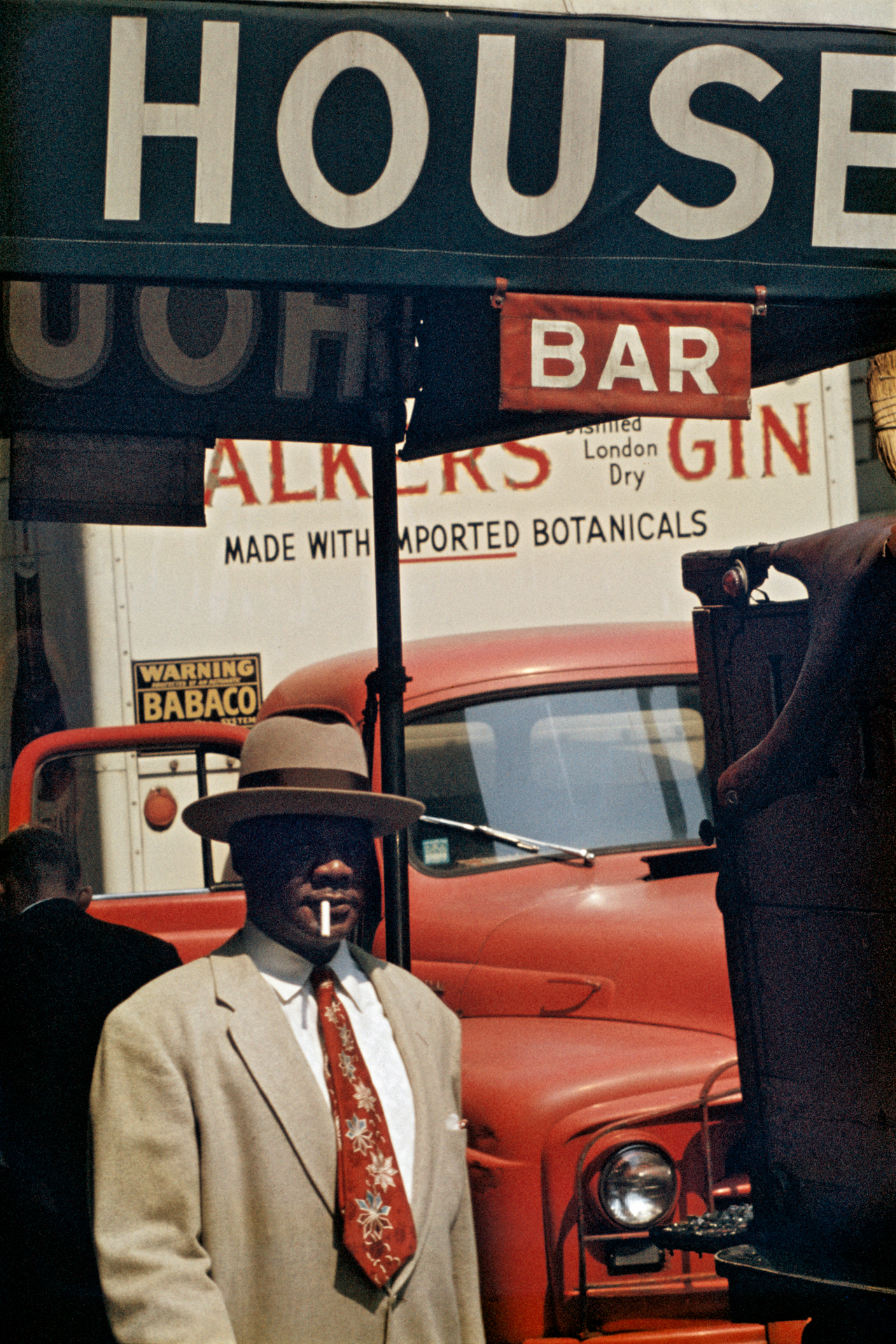
Although relatively unknown for most of his career, Leiter was well-regarded among a small group of New York artists and editors in the 1950s and 60s including John Cage, Andy Warhol and Diane Arbus. His colour images were included in Edward Steichen’s Experimental Photography in Colour show at MoMA in 1957, and his black-and-white photographs appeared in Jane Livingston’s The New York School: Photographs, 1936-1963 book alongside the work of Robert Frank, William Klein and Helen Levitt in 1992. Howard Greenberg brought him into the commercial art world by giving him his first show in 1993, before which he received his first museum solo show at Milwaukee Art Museum in 2006, the same year his book Early Color brought him to wider art-world and photo industry attention.
And Leiter’s archive is huge. After his death in 2013, he left 15,000 black-and-white prints, over 40,000 colour slides, a similar number of black-and-white negatives and over 4000 paintings. It seems remarkable to suggest this volume of work can cohere without a distinct thesis or ideological motivation, but that is Leiter’s power of quiet accumulation. His work is distant but powerful – a photographer who saw but never interrupted. “I’ve enjoyed having books. I’ve enjoyed looking at paintings. I’ve enjoyed having someone in my life that I care about and who cares about me,” he said. “I attached more importance to that than I did to the idea of success.”

